What changes do you associate with spring? Probably warmer temperatures, rainy days and the coming of flowers and buds on trees, right? While all of these ARE undeniably signs of spring, there is so much more to it once you look more closely.
Did you know many amphibians come out of hiding in the early spring to visit ponds, wetlands and/or vernal pools where they will breed and lay their eggs. Did you ever wonder how they know when it’s time?
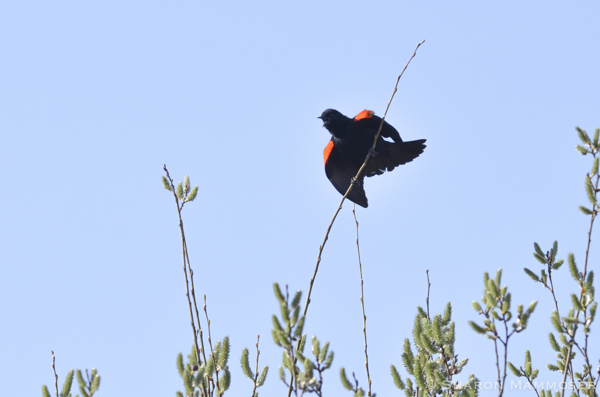
For the Spotted Salamander, folklore says that the cue is the first all-day rain on a warm day after the return of the red-winged blackbird. After dark, these salamanders will emerge from their hiding places in the forest and migrate towards the same vernal wetlands where they were born.
Here are some more facts about these fascinating creatures:
1.Spotted salamanders ( Ambystoma maculatum) are found throughout the eastern United States north of Florida. Their range extends west to Texas and then north to the eastern parts of Canada
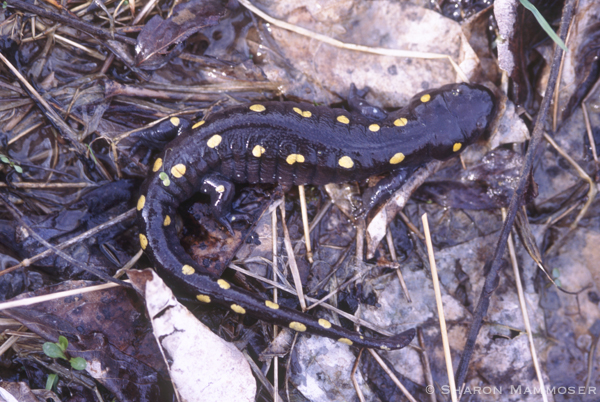
2.Spotted salamanders require two different habitats–a vernal pool/wetland as well as hardwood and mixed hardwood forest. Vernal pools are pools that usually fill with water in the late winter, early spring, but dry up before summer. Vernal pools lack fish but often contain an animal called fairy shrimp. (In many places in their range, spotted and other salamanders are in jeopardy because of their dependance on these vernal pools. Human impact is high– be it disruption or destroying of essential habitat when people modify natural drainage or runoff patterns, paving or building over the pools, the construction of roads with curbs salamanders cannot navigate or, roads that divide habitat and require the salamanders to cross them.Click HERE to read about how one town is addressing salamanders needing to cross roads.)
3.Except for maybe two weeks of the year when they adults are at vernal pools, these salamanders spend their entire lives hidden on land–hence their nickname of “mole salamanders.” (They are not the only type of mole salamanders) As adults, spotted salamanders have lungs and strong legs and will spend their days beneath logs, rocks, soil or leaf litter. Most people never see them!
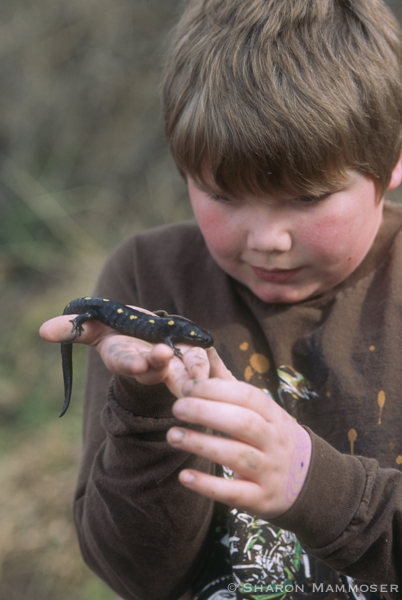
4. Adults are, on average 6 -7 inches long but can be as long as 9 inches. They have black bodies with two, irregular rows of yellow dots running their body length. Their underside is dark gray or blue-black.
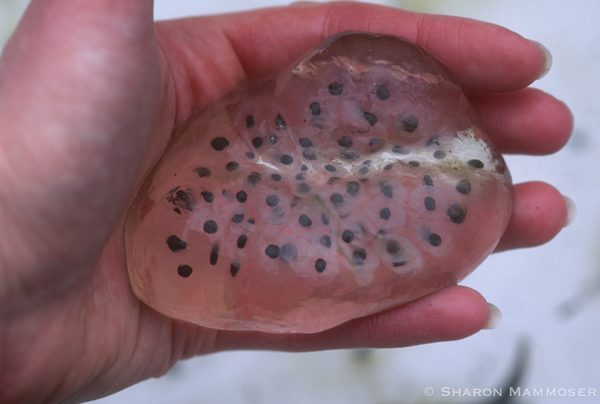 5. Adult salamanders live within half of a mile of their breeding pools. Males return to pools a day or two before females. They find their way, perhaps several hundred yards, by following chemical cues. At their pools they will gather with many other spotted salamanders.
5. Adult salamanders live within half of a mile of their breeding pools. Males return to pools a day or two before females. They find their way, perhaps several hundred yards, by following chemical cues. At their pools they will gather with many other spotted salamanders.
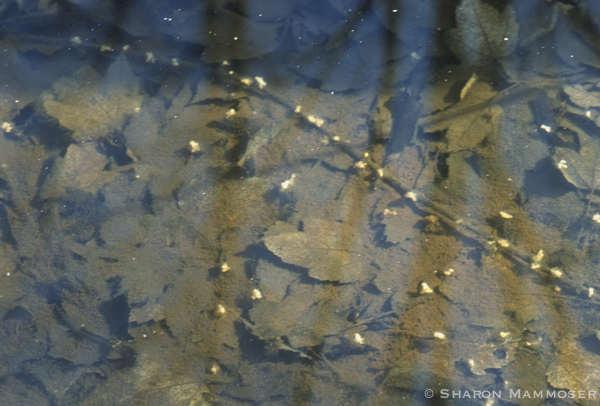
6. Males cling to females and release what is called a “spermatophore” which is a milky, white packet containing sperm. They will attach this to a submerged stick or vegetation. Females then bring the spermatophores into their bodies through their cloaca where the eggs will be fertilized. They may pick up spermatophores from multiple males. Then they produce clusters of eggs, which they might attach to submerged vegetation.
7. Egg masses may contain up to 30-250 eggs. Each egg is surrounded by a gelatinous mass and then there is another layer around the whole mass, called a matrix. Frog eggs lack this outer gelatinous mass. (Click HERE to see photos comparing eggs, or HERE to read about wood frogs, another amphibian that uses vernal pools)
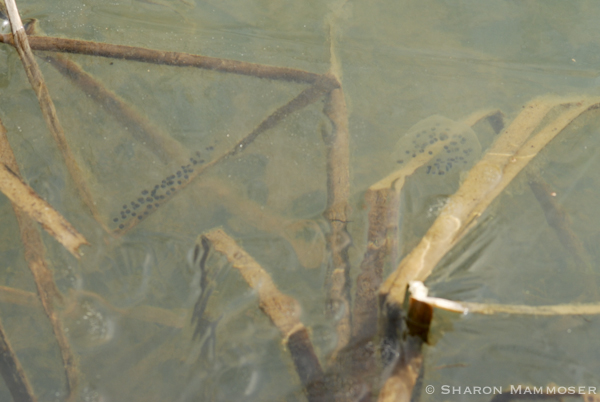
8. Depending on the temperature of the water, eggs will hatch into gilled-larvae in 2-8 weeks. If the pond dries up before this, they will likely die. If it freezes, they will survive.
9. Adult salamanders have a sticky tongue and eat various invertebrates including worms, spiders, centipedes, slugs, millipedes, crickets, etc. Aquatic larvae eat zoo plankton. The survival rate for the larvae is very low and they don’t reach sexual maturity until 2-5 years. If they survive the larval stage and reach maturity, they can live for more than 20 years!
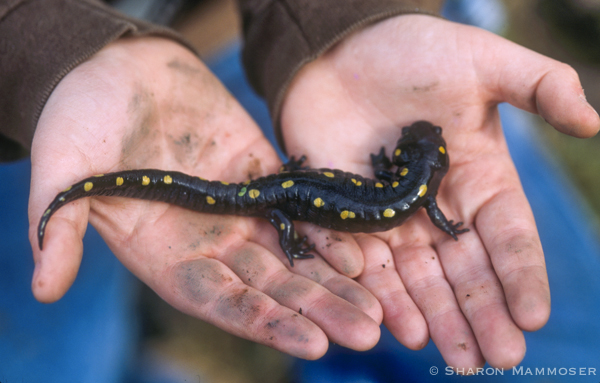 10. Egg masses sometimes contain a symbiotic blue-green alga that consumes the carbon dioxide the embryos produce, transforming it into oxygen that they can use. Read a fascinating article from Discovery Magazine HERE or HERE from Nature News.)
10. Egg masses sometimes contain a symbiotic blue-green alga that consumes the carbon dioxide the embryos produce, transforming it into oxygen that they can use. Read a fascinating article from Discovery Magazine HERE or HERE from Nature News.)
Check out these posts showing how some towns are addressing the problem of spotted salamanders getting to their vernal pools:
From Boston.com
From the Hitchcock Center for the Environment

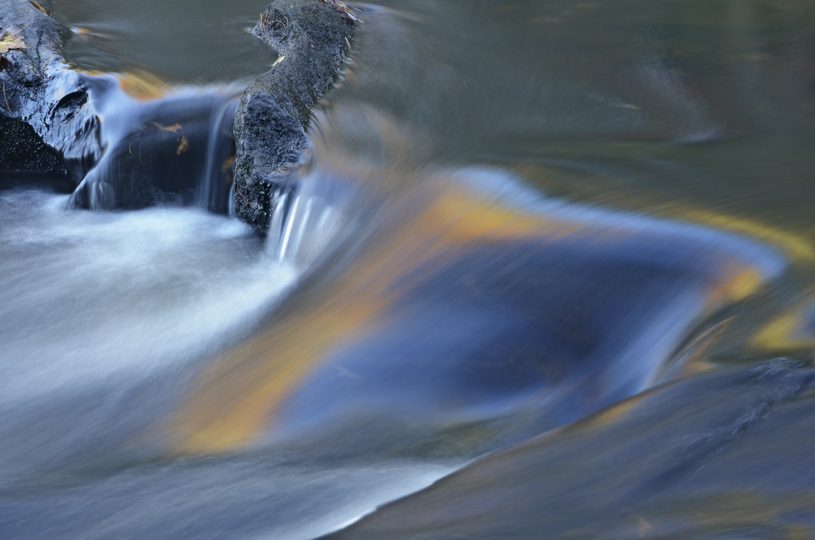
This is awesome information! Salamanders are amazing!
Hi Frieda, thanks for taking the time to comment! So glad you found the information helpful. I am happy you agree that salamanders are amazing!! Do you live in WNC? If so, maybe you would like to attend my amphibian program at The Compleat Naturalist on March 18th?
Why is it that when you dig a big hole, fill it with water and keep it full, within a year or two it will have fish in it! How does this happen? Where do they come from? Is there a “fish fairy?
Another hmmmm…. a fish fairy? Well now I’ve never heard of that but it deserves points for creativity. Actually fish get into a body of water in a number of different ways. Fish eggs, or fry as they are called, may be carried on the bodies of other animals–on their feet or mouths. These eggs might also get into a pond/hole in the ground by clinging to a water plant that you decide to move there or perhaps a flood might wash some in from another nearby water source… or of course, they could be dropped from the heavens by a fish fairy. Stranger things have happened no doubt!
Thanks for writing.